MSI GL63 8RC review – MSI’s budget friendly gaming solution
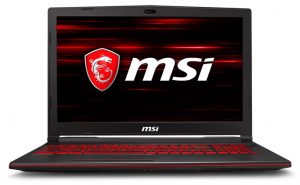 Today we have another MSI notebook for you – the GL63 8RC. It’s a very similar notebook to the MSI GP63 Leopard 8RD that we recently reviewed but it’s more affordable. The design is almost the same and the hardware is very similar. However, there are a few differences that make the Gl63 8RC a unique device.
Today we have another MSI notebook for you – the GL63 8RC. It’s a very similar notebook to the MSI GP63 Leopard 8RD that we recently reviewed but it’s more affordable. The design is almost the same and the hardware is very similar. However, there are a few differences that make the Gl63 8RC a unique device.
The most distinguishing fact is that the GL63 8RC can only be configured with a GTX 1050 GPU rather than the more powerful GTX 1050 Ti. There are also some differences between the designs and the keyboards that we will talk about.
Overall, this review will look like some sort of a comparison.
You can check the prices and configurations in our Specs System: https://laptopmedia.com/series/msi-gl63-8rc/
Contents
Specs Sheet
MSI GL63 8RC Tabella delle specifiche tecniche
What’s in the box?
Inside the box, you can find the notebook itself accompanied by a few quick start guides and the 135W wall charger.
Design and construction
The design of the MSI GL63 8RC is nearly identical to this of the GP63 Leopard 8RD. The vents, port positioning, and dimensions are all the same. There is a minor difference in the design of the lid. The GL63 8RC has a more simple look. There are two vents at the back, two on the sides, and a few on the bottom – good airflow is guaranteed and an aggressive design is present.
The construction, however, is where the two notebooks differ. While the GP63 Leopard 8RD had an equal amount of plastic and metal in its build, the GL63 8RC solely relies on plastic to keep the price low. The build is not very good but that’s expected from a budget device.
When you open the lid (which requires both hands), you see the 15.6-inch panel with relatively thin bezels. Below is the SteelSeries keyboard. Definitely a good one. It has the same layout as the one on the GP63 Leopard 8RD but this time you have a single-color red backlight. The lack of RGB coloring is the second major difference between the two notebooks. However, this does not affect the quality of the keyboard. The touchpad is identical – good but nothing spectacular.
Despite the difference in the materials used for the chassis, the dimensions of both notebooks are identical. So is the weight.
| Width | Length | Height | Weight | |
|---|---|---|---|---|
| MSI GL63 8RC | 383 mm (15.08″) | 260 mm (10.24″) | 29 mm (1.14″) | 2.20 kg (4.9 lbs) |
| MSI GP63 Leopard 8RD | 383 mm (15.08″) | 260 mm (10.24″) | 29 mm (1.14″) | 2.20 kg (4.9 lbs) |
Ports
The MSI GL63 8RC has the same port selection and positioning like the GP63 Leopard 8RD. There are three indicator LEDs on the front and most ports are on the left side.
On the left side, you can find a lock slot, Gigabit Ethernet port, an HDMI, a Mini DisplayPort, a USB 3.1 Type-A port, a USB Type-C port, and two 3.5 mm jacks for a microphone and headphones.
The right-hand side is home to the DC jack, another two USB 3.1 Type-A ports, and the SD card reader.
Disassembly, upgrade options and maintenance
To remove the back cover, you need to unscrew 11 Philips screws. The configuration inside is the same as in the MSI GP63 Leopard 8RD. You can check out its review for more details.
Display quality
The MSI GL63 8RC has a Full HD TN panel with a model number N156HGA-EAL. Its size is 15.6-inches (39.62 cm), the screen ratio 16:9 and the resolution 1920 x 1080 which translates into a pixel density of 142 ppi. The pixel pitch is 0.18 х 0.18 mm. The screen becomes Retina when viewed from at least 60 cm (from this distance the human eye can’t see the individual pixels).
The viewing angles are not comfortable. We offer images at 45° to evaluate the quality.
The maximum measured brightness is 224 nits (cd/m2) in the middle of the screen and 205 nits (cd/m2) average across the surface with a maximum deviation of 13%. The Correlated Color Temperature on a white screen and at maximum brightness is 7820K (average) – a bit colder than the optimal 6504K temperature for sRGB. The average color temperature through the grey scale before profiling is 15000K.
In the illustration below you can see how the display performs from uniformity perspective. In other words the leakage of light from the light source. The illustration below shows how matters are for operational brightness levels (approximately 140 nits) – in this particular case at 61% Brightness (White level = 141 cd/m2, Black level = 0.43 cd/m2).
Values of dE2000 over 4.0 should not occur, and this parameter is one of the first you should check if you intend to use the laptop for color sensitive work (a maximum tolerance of 2.0 ). The contrast ratio is – 330:1 (290:1 after profiling).
Color reproduction
To make sure we are on the same page, we would like to give you a little introduction of the sRGB color gamut and the Adobe RGB. To start, there’s the CIE 1976 Uniform Chromaticity Diagram that represents the visible specter of colors by the human eye, giving you a better perception of the color gamut coverage and the color accuracy.
Inside the black triangle, you will see the standard color gamut (sRGB) that is being used by millions of people in HDTV and on the web. As for the Adobe RGB, this is used in professional cameras, monitors etc for printing. Basically, colors inside the black triangle are used by everyone and this is the essential part of the color quality and color accuracy of a mainstream notebook.
Still, we’ve included other color spaces like the famous DCI-P3 standard used by movie studios, as well as the digital UHD Rec.2020 standard. Rec.2020, however, is still a thing of the future and it’s difficult for today’s displays to cover that well. We’ve also included the so-called Michael Pointer gamut, or Pointer’s gamut, which represents the colors that naturally occur around us every day.
The yellow dotted line shows MSI GL63 8RC’s color gamut coverage.
It covers 100% of the sRGB color space and even 96% of DCI-P3 in CIE1976. A very broad color range.
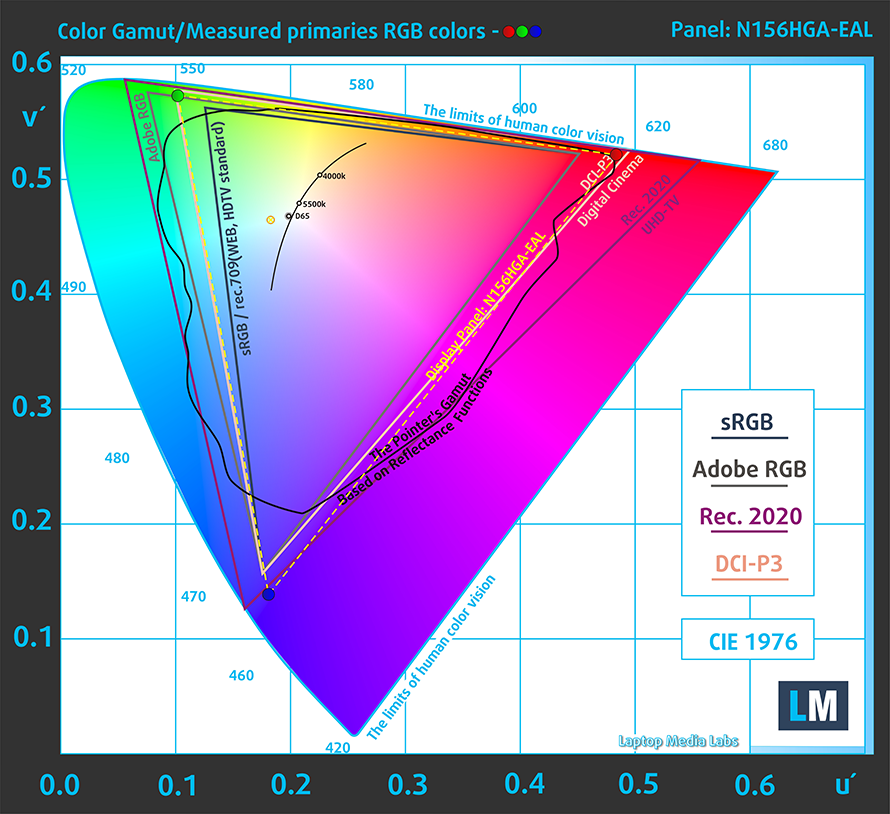
Our “Design and Gaming” profile delivers optimal color temperature (6500K) at 140 cd/m2 luminance and sRGB gamma mode.
We tested the accuracy of the display with 24 commonly used colors like light and dark human skin, blue sky, green grass, orange etc. You can check out the results at factory condition and also, with the “Design and Gaming” profile.
Below you can compare the scores MSI GL63 8RC with the default settings (left), and with the “Gaming and Web design” profile (right).
The next figure shows how well the display is able to reproduce really dark parts of an image, which is essential when watching movies or playing games in low ambient light.
The left side of the image represents the display with stock settings, while the right one is with the “Gaming and Web Design” profile activated. On the horizontal axis, you will find the grayscale and on the vertical axis – the luminance of the display. On the two graphs below you can easily check for yourself how your display handles the darkest nuances but keep in mind that this also depends on the settings of your current display, the calibration, the viewing angle and the surrounding light conditions.
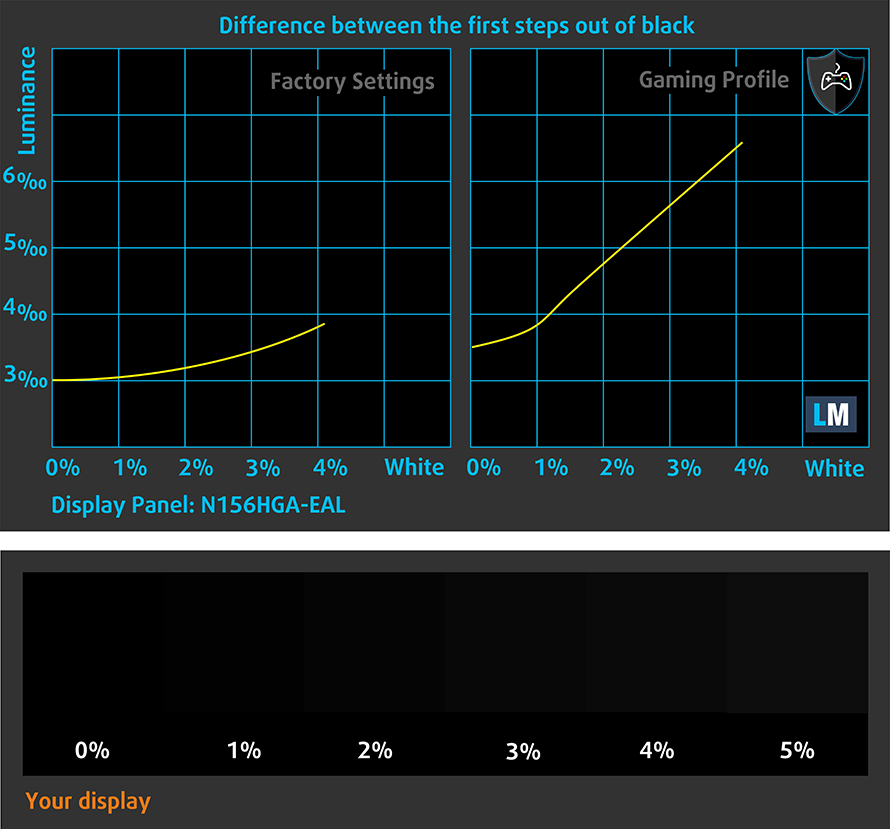
Response time (Gaming capabilities)
We test the reaction time of the pixels with the usual “black-to-white” and “white-to-black” method from 10% to 90% and vice versa.
We recorded Fall Time + Rise Time = 11 ms. A very fast panel.
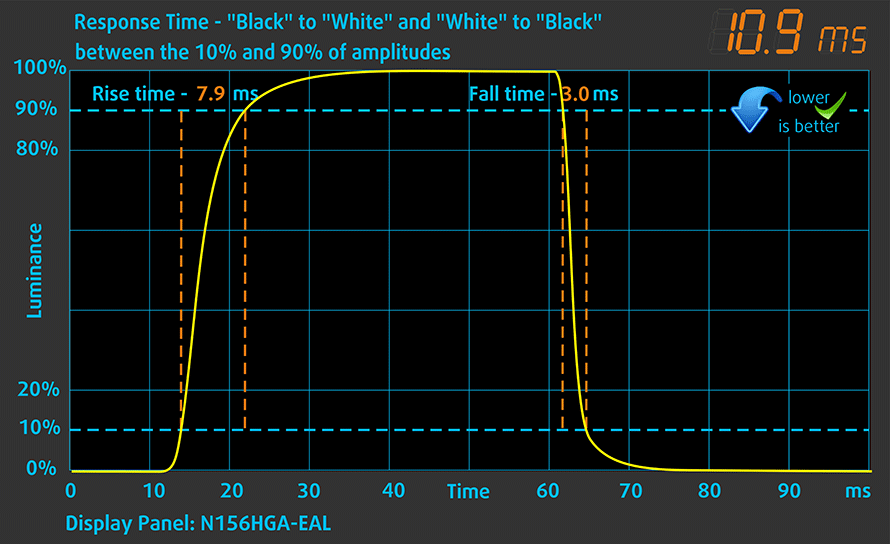
PWM (Screen flickering)
Pulse-width modulation (PWM) is an easy way to control monitor brightness. When you lower the brightness, the light intensity of the backlight is not lowered, but instead turned off and on by the electronics with a frequency indistinguishable to the human eye. In these light impulses, the light/no-light time ratio varies, while brightness remains unchanged, which is harmful to your eyes. You can read more about that in our dedicated article on PWM.
The screen is pulse-width modulated only below 60 nits and even so the frequency is very high which makes it virtually harmless. Also, you will almost certainly use it set above 60 nits so you can say that it’s PWM-free making it suitable for prolonged use from this point of view.
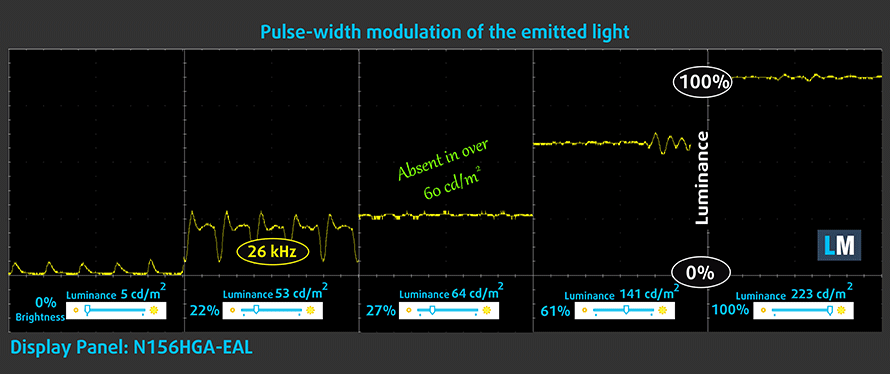
Blue light emissions
Installing of our Health-Guard profile not only eliminates PWM but also reduces the harmful Blue Light emissions while keeping the colors of the screen perceptually accurate. If you’re not familiar with the Blue light, the TL;DR version is – emissions that negatively affect your eyes, skin and your whole body. You can find more information about that in our dedicated article on Blue Light.
You can see the levels of emitted blue light on the spectral power distribution (SPD) graph.
Conclusion
The panel on the MSI GL63 8RC is a typical gaming one. It has a broad color range, fast response time, and it’s not PW-modulated for most brightness levels. However, it’s a TN panel so viewing angles are uncomfortable.
Buy our profiles
Since our profiles are tailored for each individual display model, this article and its respective profile package are meant for MSI GL63 8RC configurations with 15.6″ N156HGA-EAL (FHD, 1920 × 1080) TN.
*Should you have problems with downloading the purchased file, try using a different browser to open the link you’ll receive via e-mail. If the download target is a .php file instead of an archive, change the file extension to .zip or contact us at [email protected].
Read more about the profiles HERE.
Oltre a ricevere profili efficienti e rispettosi della salute, comprando i prodotti di LaptopMedia sostenete anche lo sviluppo dei nostri laboratori, dove testiamo i dispositivi per produrre le recensioni più obiettive possibili.

Lavoro in ufficio
Lavoro in ufficio dovrebbe essere usato soprattutto dagli utenti che passano la maggior parte del tempo a guardare pezzi di testo, tabelle o semplicemente a navigare. Questo profilo mira a fornire una migliore distinzione e chiarezza mantenendo una curva gamma piatta (2.20), una temperatura di colore nativa e colori percettivamente accurati.

Design e gioco
Questo profilo è rivolto ai designer che lavorano professionalmente con i colori, e anche per giochi e film. Design and Gaming porta i pannelli di visualizzazione ai loro limiti, rendendoli il più accurati possibile nello standard sRGB IEC61966-2-1 per Web e HDTV, al punto di bianco D65.

Salute-Guardia
Salute-Guardia elimina la nociva Pulse-Width Modulation (PWM) e riduce la luce blu negativa che colpisce i nostri occhi e il nostro corpo. Essendo personalizzato per ogni pannello, riesce a mantenere i colori percettivamente accurati. Salute-Guardia simula la carta, quindi la pressione sugli occhi è notevolmente ridotta.
Ottenete tutti e 3 i profili con il 33% di sconto
Sound
The MSI GL63 8RC has two large 3W speakers which output crisp, clear and loud tones across the whole hearing spectrum.
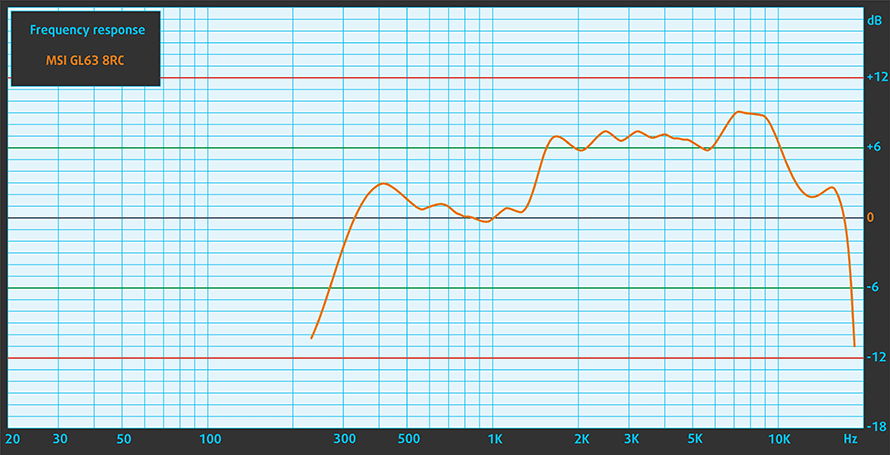
Drivers
You can find all the necessary drivers on MSI’s support page: https://www.msi.com/Laptop/support/GL63-8RC#undefined
Battery
The MSI GL63 8RC runs on a 6-cell 41Wh battery. Battery life is low even for the gaming notebooks standards.
Now, we conduct the battery tests with Windows Better performance setting turned on, screen brightness adjusted to 120 nits and all other programs turned off except for the one we are testing the notebook with.
Per simulare le condizioni reali, abbiamo utilizzato un nostro script per la navigazione automatica su oltre 70 siti web.



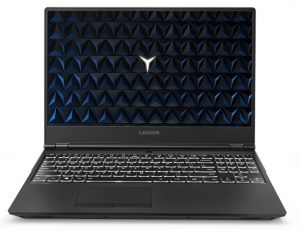
Per ogni test come questo, utilizziamo lo stesso video in HD.




Utilizziamo il benchmark integrato di F1 2017 in loop per simulare il gioco reale.




CPU options
The two CPU options for the MSI GL63 8RC are the Core i5-8300H and the Core i7-8750H. Our configuration is equipped with the latter, more powerful one.
I risultati provengono dal test CPU Cinebench 20 (più alto è il punteggio, meglio è)
I risultati provengono dal nostro test di Photoshop (più basso è il punteggio, meglio è)
I risultati provengono dal benchmark scacchistico Fritz (più alto è il punteggio, meglio è)
GPU options
As for the GPU, you can choose between the 2GB and 4GB GDDR5 versions of the NVIDIA GTX 1050. Our model has the larger in capacity graphics card. We wouldn’t recommend getting a 2GB GPU in 2018.
I risultati provengono dal benchmark 3DMark: Fire Strike (Grafica) (più alto è il punteggio, meglio è)
I risultati provengono dal benchmark Unigine Superposition (più alto è il punteggio, migliore è il risultato)
Gaming tests
Here we will not only give you an idea of how the GTX 1050 in the MSI GL63 8RC performs in gaming. We will compare it to the GTX 1050 Ti inside the MSI GP63 Leopard 8RD. The two notebooks are almost identical in terms of build quality and cooling system design so the charts below should give a good representation of exactly how much better the GTX 1050 Ti is.

| Grand Theft Auto V (GTA 5) | Full HD, Normal (Check settings) | Full HD, High (Check settings) | Full HD, Very High (Check settings) |
|---|---|---|---|
| MSI GP63 Leopard 8RD (GTX 1050 Ti) | 128 fps (+6%) | 76 fps (+23%) | 40 fps (+21%) |
| MSI GL63 8RC (GTX 1050) | 121 fps | 62 fps | 33 fps |

| Far Cry Primal | Full HD, Normal (Check settings) | Full HD, High (Check settings) | Full HD, Very High (Check settings) |
|---|---|---|---|
| MSI GP63 Leopard 8RD (GTX 1050 Ti) | 60 fps (+18%) | 54 fps (+20%) | 44 fps (+22%) |
| MSI GL63 8RC (GTX 1050) | 51 fps | 45 fps | 36 fps |

| Rise of the Tomb Raider (2016) | Full HD, Lowest (Check settings) | Full HD, Medium (Check settings) | Full HD, Very High (Check settings) |
|---|---|---|---|
| MSI GP63 Leopard 8RD (GTX 1050 Ti) | 95 fps (+19%) | 65 fps (+25%) | 31 fps (+24%) |
| MSI GL63 8RC (GTX 1050) | 80 fps | 52 fps | 25 fps |

| Tom Clancy’s Ghost Recon Wildlands | Full HD, Medium (Check settings) | Full HD, High (Check settings) | Full HD, Very High (Check settings) |
|---|---|---|---|
| MSI GP63 Leopard 8RD (GTX 1050 Ti) | 47 fps (+21%) | 43 fps (+19%) | 31 fps |
| MSI GL63 8RC (GTX 1050) | 39 fps | 36 fps | 31 fps |
Temperatures and comfort
We have a new way of torturing laptops, and for gaming machines, it comprises of 100% CPU load plus real gameplay test (Rise of the Tomb Raider).
Max CPU load
In this test we use 100% on the CPU cores, monitoring their frequencies and chip temperature. The first column shows a computer’s reaction to a short load (2-10 seconds), the second column simulates a serious task (between 15 and 30 seconds), and the third column is a good indicator of how good the laptop is for long loads such as video rendering.
Average core temperature (base frequency + X); CPU temp.
| Core i7-8750H (45W TDP) | 0:02 – 0:10 sec | 0:15 – 0:30 sec | 10:00 – 15:00 min |
|---|---|---|---|
| MSI GL63 8RC | 2.16 GHz (B-2%)@ 56°C | 2.40 GHz (B+9%)@ 62.5°C | 2.47 GHz (B+12%)@ 79°C |
| MSI GP63 Leopard 8RD | 2.30 GHz (B+4.5%)@ 53°C | 2.42 GHz (B+10%)@ 62°C | 2.46 GHz (B+12%)@ 76°C |
| Dell G3 15 3579 | 2.88 GHz (B+31%)@ 86°C | 2.81 GHz (B+28%)@ 87°C | 2.53 GHz (B+15%)@ 76°C |
As you can see, the cooling system of the GL63 8RC is great. It manages to keep low temperatures throughout the whole 15-minute stress test. Compared to the GP63 Leopard 8RD, there is almost no difference which isn’t a surprise – both notebooks have the same cooling system and run on the same CPU. The GL63 8RC seems to be holding a few degrees higher temperatures but this offset is minimal and not really informative.
Real gameplay
| GPU frequency/ Core temp (after 2 min) | GPU frequency/ Core temp (after 30 min) | |
|---|---|---|
| MSI GL63 8RC (GTX 1050) | 1658 MHz @ 65°C | 1645 MHz @ 69°C |
| MSI GP63 Leopard 8RD (GTX 1050 Ti) | 1696 MHz @ 67°C | 1696 MHz @ 66°C |
Here you can see that the temperature is again low but the clock is high. In fact, the GTX 1050 inside the GL63 8RC reaches very high frequencies that are almost on par with those of the GTX 1050 Ti. Usually, the GTX 1050 is listed with a boost clock of up to 1493 MHz.
Gaming comfort
After more than 30 minutes of gaming, the surface temperatures of the MSI GL63 8RC can’t top 45°C.
Verdict
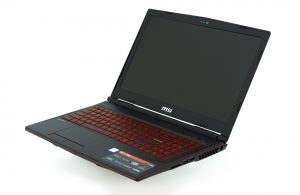 The MSI GL83 8RC is one of the brand’s budgets notebooks and there is no doubt about it. With its plastic build and GTX 1050, you can’t mistake it but just what is the difference with the MSI GP63 Leopard 8RD?
The MSI GL83 8RC is one of the brand’s budgets notebooks and there is no doubt about it. With its plastic build and GTX 1050, you can’t mistake it but just what is the difference with the MSI GP63 Leopard 8RD?
The two notebooks could be looked upon as two different configurations of the same notebook rather than as two models. They have the same screen options and both configurations that we tested were with the same panel. The panel has a very broad color range but color accuracy isn’t good (our profiles help with that).
With the MSI GL83 8RC, you get a more simple single-color backlit keyboard rather than an RGB one but it’s still as good as the other. You also get an all-plastic build but this doesn’t affect the weight or the cooling capabilities of the notebook so the difference is purely aesthetic.
Speaking of the cooling system, both notebooks have the same internals and the only difference is that today’s model is equipped with the less powerful GTX 1050 GPU. Temperatures are enviably low which is great. This allows for a great comparison between the GTX 1050 and the GTX 1050 Ti. The latter is about 20% better in games, however, even so, you will have to stick to lower graphics settings because it struggles to reach 60 fps in lots of titles. We wouldn’t recommend getting the 120Hz panel on either of the notebooks because you probably won’t make use of it.
And lastly, the MSI GL83 8RC has a smaller 41Wh battery which for some reason delivers really poor battery life. In conclusion, the MSI GL83 8RC is the MSI GP63 Leopard 8RD without the metal lid, RGB keyboard and the GTX 1050 Ti but it will save you around 200 dollars. Considering that MSI’s notebooks keep a little bit higher prices than many competitors if you are really on a tight budget, the GL83 8RC is better value.
You can consider the Dell G3 15 3579, the Lenovo Legion Y530, the ASUS TUF Gaming FX504 or the Acer Nitro 5 AN515-52 as an alternative.
You can check the prices and configurations in our Specs System: https://laptopmedia.com/series/msi-gl63-8rc/
Pros
- Very good cooling system
- Broad color range – 100% sRGB, 96% DCI-P3 in CIE1976 (N156HGA-EAL)
- Great keyboard
- More affordable than the MSI GP63 Leopard 8RD
Cons
- Inaccurate colors (N156HGA-EAL, fixed by our profiles)
- Poor battery life
- All-plastic build
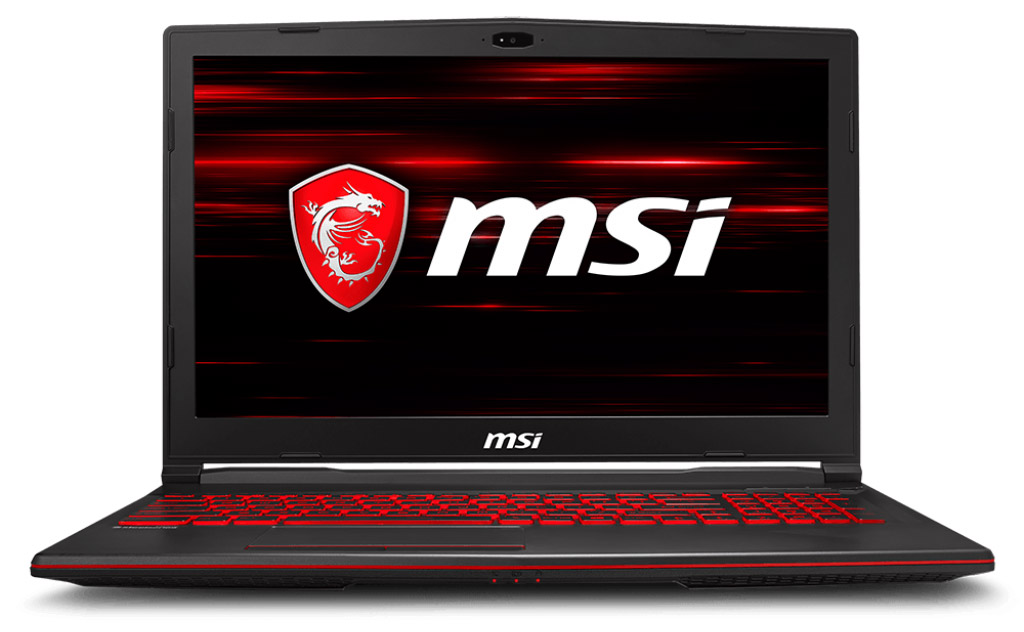
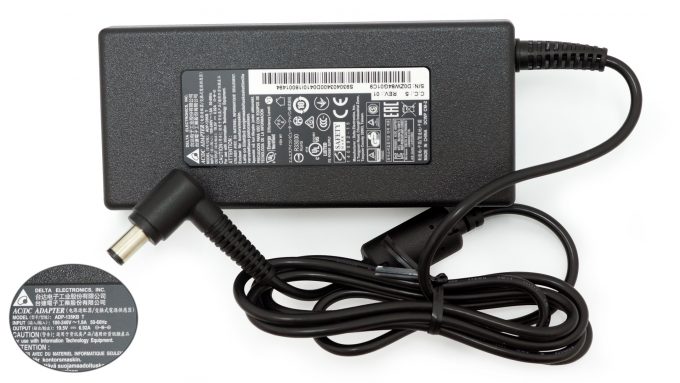
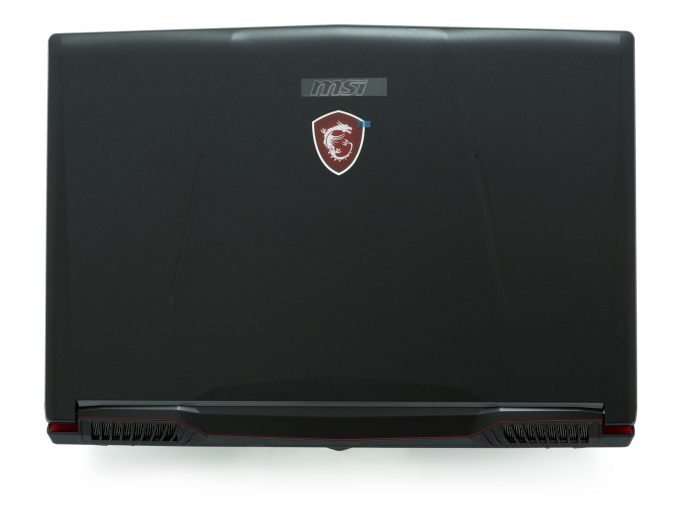
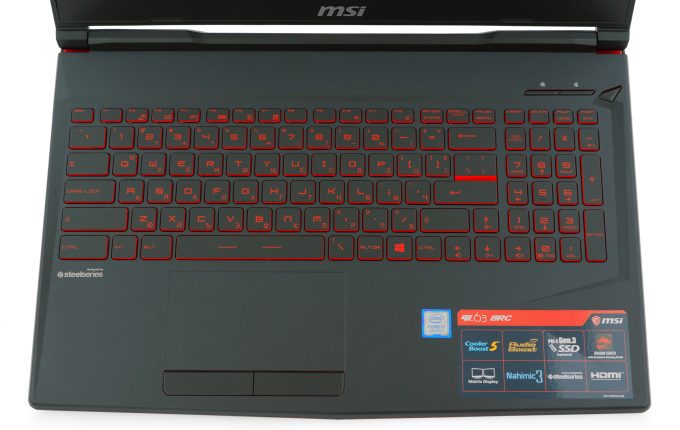


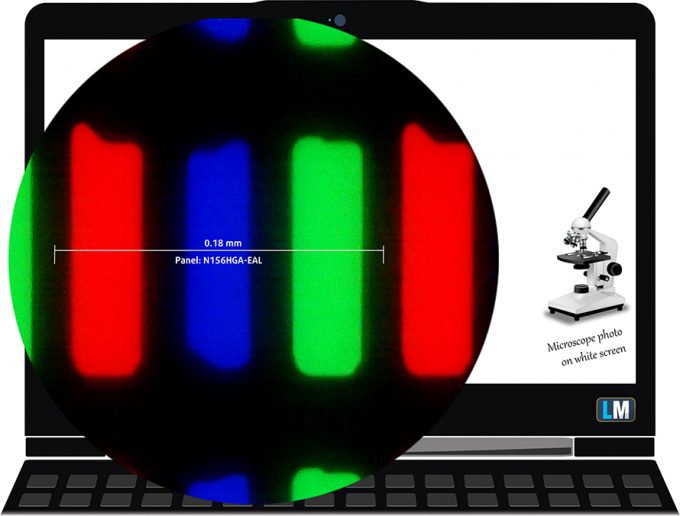

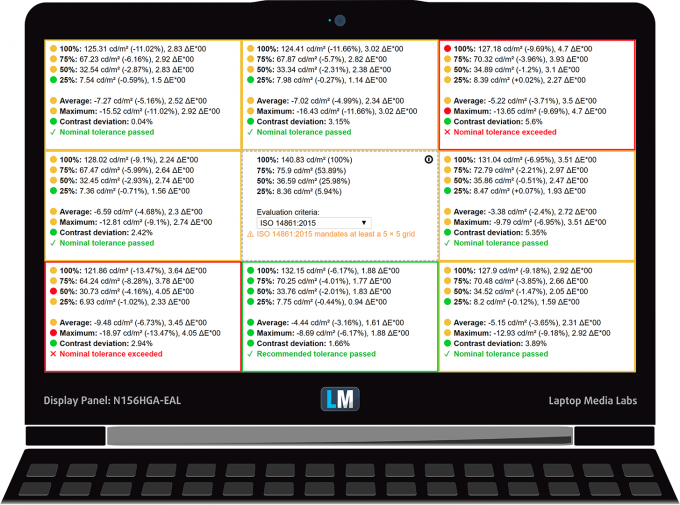
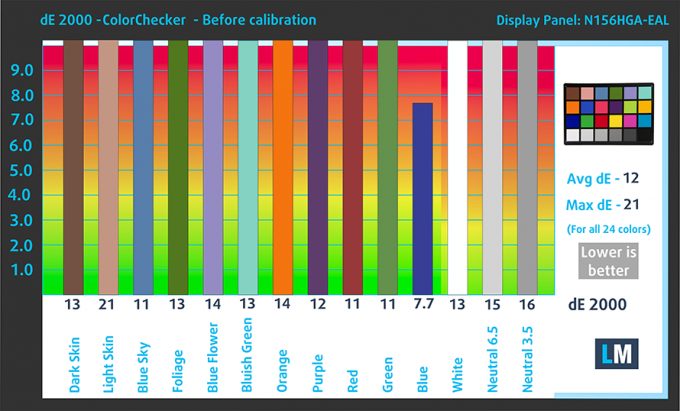
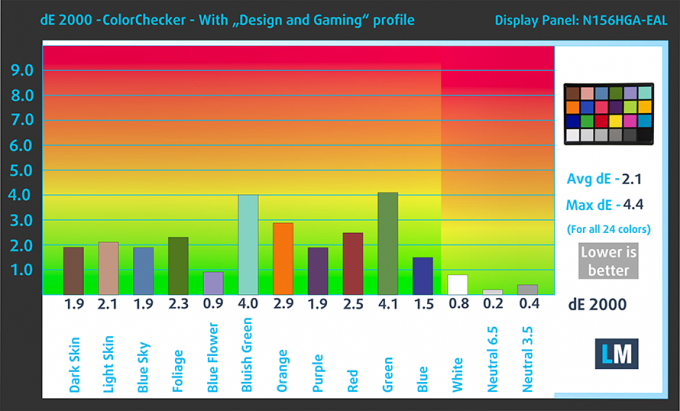

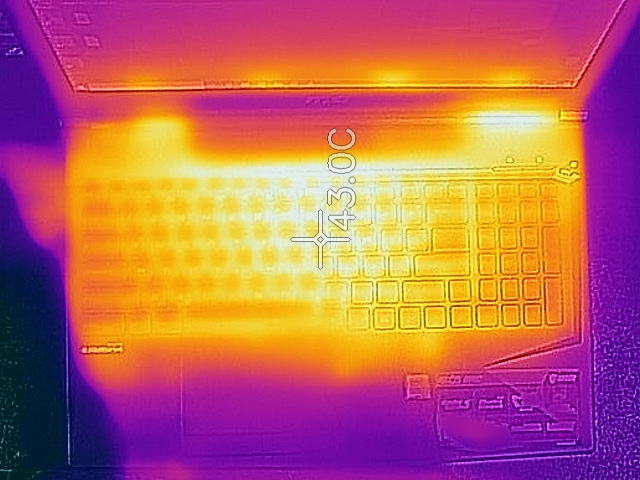








Hi, do you know it’s possible to upgrade this laptop to 16gb RAM. Is there a spare slot?
Yes and yes!
Since this review was written, the GTX 1060 (6gb) is now an option. Will this computer with the gtx 1060 still have the same PWM characteristics?
Is there anyway to change the batteries out for ones that will\last longer.
Pretty good for a budget gaming laptop. Though MSI need to makes some improvements on the hinges.